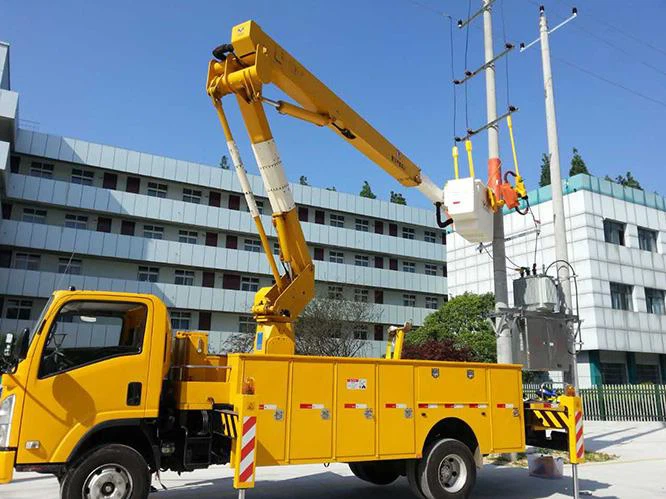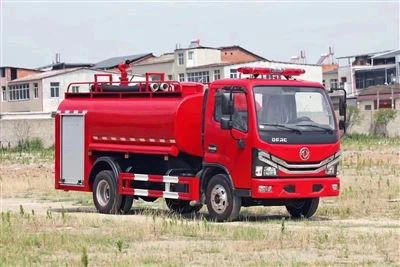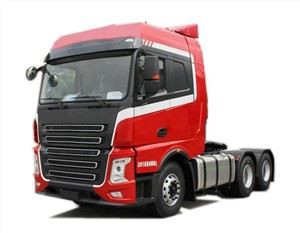Understanding Truck Tippers: Types, Uses, and Practical Insights

A truck tipper, commonly referred to as a dump truck, is an essential vehicle in the construction, agriculture, and waste management industries. Known for its versatility and efficiency, a truck tipper is designed to transport materials such as sand, gravel, or debris and unload them by tilting the truck bed. In this comprehensive article, we will explore the various types of truck tippers, their uses, components, and tips for maintenance, aiming to provide you with a thorough understanding of this indispensable machinery.
What is a Truck Tipper?
A truck tipper is a specialized vehicle built for transporting materials and unloading them quickly and efficiently. The key characteristic of a truck tipper is its ability to tilt the bed of the truck to discharge its load. This capability makes it a preferred choice in many industries where the quick unloading of heavy or loose materials is necessary.
Types of Truck Tippers
1. Standard Dump Trucks
Standard dump trucks are the most common type of truck tippers. They feature a straight, non-articulated chassis with a dump body mounted on the frame. Typically, they are used for transporting bulk material like sand, gravel, and broken concrete.
2. Articulated Dump Trucks
Articulated dump trucks are characterized by their jointed structure, which allows them to navigate rough terrains with greater ease. With a larger payload capacity and better off-road capabilities, they’re ideal for construction sites and mines.
3. Semi-Trailer Dump Trucks
Semi-trailer dump trucks use a chassis with a detachable trailer. The dump bed is mounted on the trailer and can be towed by a tractor unit. This design allows for **larger payloads** and improved fuel efficiency.
4. Transfer Dump Trucks
Transfer dump trucks are unique because they can transfer their load to another dump truck. They consist of a truck and a trailer, making them suitable for transporting large volumes of materials over long distances.
5. Side Dump Trucks
Side dump trucks can unload their cargo to the side, making them ideal for distribution along a roadside or construction area. They are especially useful when working in tight spaces where back unloading may not be ideal.
6. Rear Dump Trucks
Rear dump trucks have a simple design where the dump bed tilts at the rear. They are easy to operate and are generally more affordable compared to articulated or semi-trailer variants.
Key Components of a Truck Tipper
1. The Chassis
The chassis is the frame of the truck that supports all other components. It must be robust enough to handle heavy loads and rough terrains.
2. The Dump Body
The dump body is designed to carry materials. Made from durable materials such as steel or aluminum, it must be lightweight yet strong to withstand heavy loads.
3. Hydraulic System
The hydraulic system is what allows the dump bed to tilt for unloading. It generally consists of hydraulic cylinders, hoses, and a pump.
4. Tires
High-quality tires are crucial for traction and stability, especially in off-road conditions. The tire selection depends on the type of terrain the truck will usually operate on.
Applications of Truck Tippers
1. Construction
In the construction industry, truck tippers are frequently used to transport and unload heavy materials like gravel, sand, and earth. They are essential for site preparation and material delivery.
2. Agriculture
Agricultural operations use truck tippers to move large quantities of soil, fertilizer, and crops. Their ability to unload quickly aids in efficiency during harvest seasons.
3. Mining Operations
In mining, truck tippers transport heavy minerals and aggregate from remote locations. Articulated dump trucks are especially popular in this field due to their ability to handle rugged terrains.
4. Waste Management
Truck tippers play a vital role in the waste management sector by transporting debris and waste materials to dumping sites. Their quick unloading feature helps maintain a steady workflow.
Maintenance Tips for Truck Tippers
1. Regular Inspections
Conduct regular inspections of the truck’s components, including tires, brakes, and hydraulic systems. This helps prevent unexpected breakdowns.
2. Clean the Dump Bed
After every use, clean the dump bed to remove any debris that can cause corrosion or damage. Regular cleaning prolongs the life of the vehicle.
3. Hydraulic System Care

Check the hydraulic fluid levels and quality regularly. If the fluid is dirty or low, it can affect the performance of the hydraulic system.
4. Tire Maintenance
Inspect tire pressure regularly and check for any signs of wear. Properly maintained tires ensure better fuel efficiency and safety.
5. Follow Manufacturer Guidelines
Always adhere to the manufacturer’s maintenance guidelines for the best performance and longevity of your truck tipper.
Safety Tips for Operating Truck Tippers
1. Training and Certification
Only trained and certified operators should handle truck tippers to ensure safety on construction sites and other environments.
2. Regular Safety Inspections
Prior to operation, perform safety checks, including brakes, lights, and signals to ensure proper functioning.
3. Load Distribution
Ensure loads are evenly distributed to maintain stability during transport. Overloading or uneven loading can lead to accidents.
4. Awareness of Surroundings
Maintain awareness of surroundings, including obstacles and personnel, to prevent accidents during operation, especially while turning or reversing.
Choosing the Right Truck Tipper
1. Determine Your Needs
Assess your specific needs—including load capacity, terrain, and type of materials—to determine which truck tipper is best suited for your operations.
2. Consider Fuel Efficiency
Evaluate the fuel efficiency of potential models to ensure that your operational costs remain manageable over time.
3. Compare Prices and Features
| Model | Load Capacity | Fuel Efficiency | Price Range |
|---|---|---|---|
| Standard Dump Truck | 10-14 tons | 8-12 MPG | USD 35,000 – 70,000 |
| Articulated Dump Truck | 20-30 tons | 6-10 MPG | USD 100,000 – 250,000 |
| Semi-Trailer Dump Truck | 15-30 tons | 8-14 MPG | USD 50,000 – 150,000 |
Future of Truck Tippers
1. Emerging Technologies
Advancements in technology, including autonomous driving and electric powertrains, are set to revolutionize truck tippers, making them safer and more efficient.
2. Environmental Considerations
As companies look to reduce their carbon footprint, electric and hybrid truck tippers are becoming increasingly popular in fleet operations.
FAQs About Truck Tippers
1. What is the average lifespan of a truck tipper?
The average lifespan of a well-maintained truck tipper can range from 10 to 15 years, depending on factors like usage and quality of maintenance.
2. Can truck tippers be used for transporting hazardous materials?
Yes, truck tippers can be adapted for transporting hazardous materials, but they must be equipped with proper safety features and abide by regulations.

3. How often should I service my truck tipper?
Truck tippers should be serviced every 5,000 to 10,000 miles or at least once a year, depending on the manufacturer’s recommendations.
4. Are there any specifications to look for when buying a used truck tipper?

When purchasing a used truck tipper, check for signs of wear and tear, maintenance records, and the overall condition of critical components, such as the hydraulic system and chassis.
5. What types of loads can truck tippers carry?
Truck tippers can carry various loads, including sand, gravel, construction debris, agricultural materials, and waste. The type of load they can handle depends on their design and capacity.
6. Is it safe to operate a truck tipper on steep terrains?
While many truck tippers are designed for rugged terrains, operating them on steep slopes requires careful handling and knowledge of the vehicle’s limitations to ensure safety.
